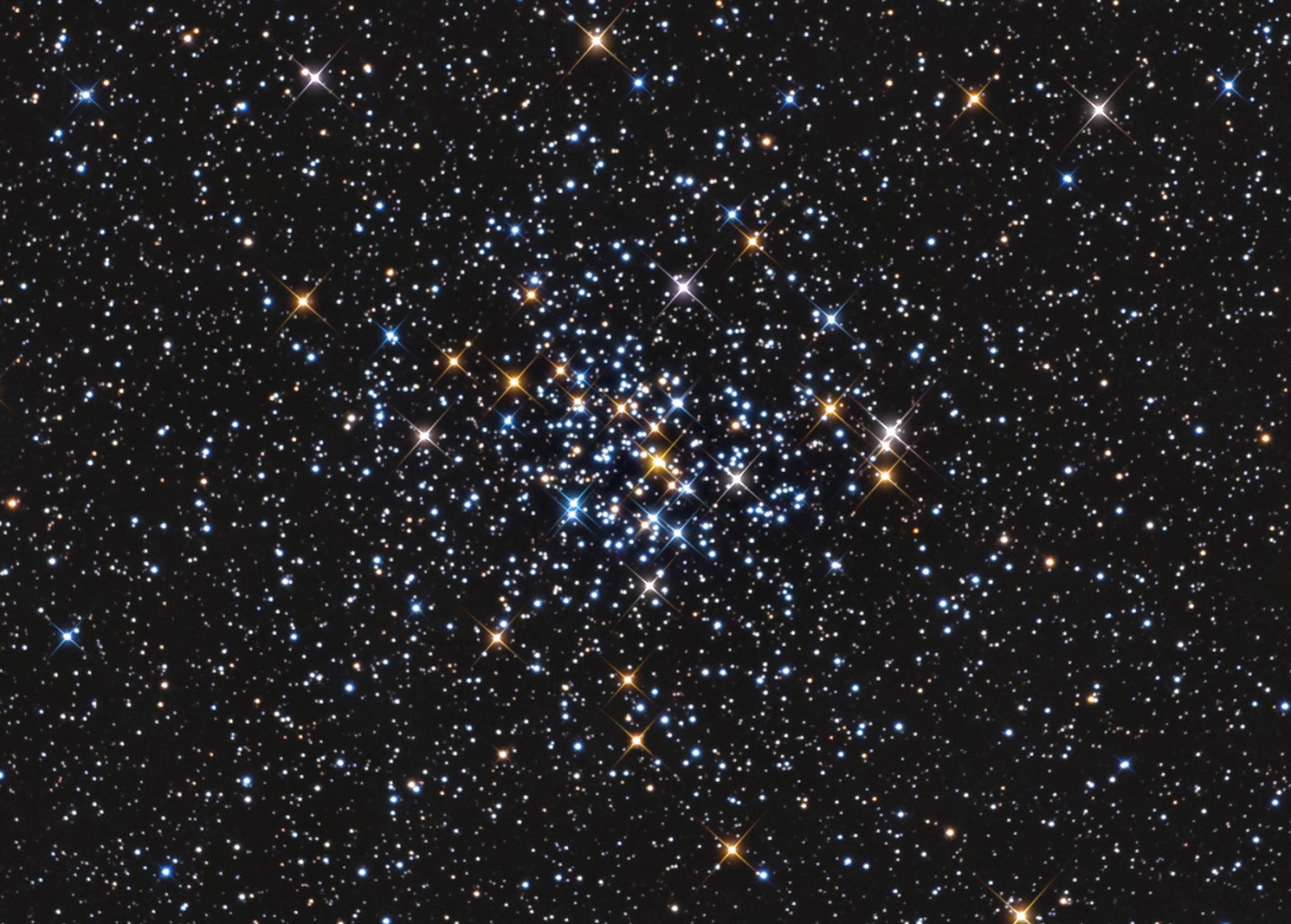For the past two winters I've noticed some interesting posts on the AAVSO website forums from Mr. Bill Wilson in the UK. He's an experienced variable star observer who started looking at the cluster called Messier 37 (M-37) in that constellation. There's a red giant star that gleams near the center of this cluster called SAO 58521.It can be seen fairly well in this photograph of M-37 taken by Emil Ivanov that I also copied from the web:
Though SAO 58521 is listed as Constant by the AAVSO with little to no variability in brightness, Mr. Wilson has been observing and reporting very unusual "behavior" in two years of studying it through the eyepiece. VSX lists it at 9.2 magnitude, but he's reported it as bright as 7.7 and as dim as 10.6. What's more, he has also reported some very quick changes in brightness, with it rising and falling almost half a magnitude in the space of a few minutes. Wilson (by his own description in his posts) was reluctant to send this information to the web, since no model of red giant star structure allows for such rapid changes in brightness. However, he was convinced enough that this needed to be investigated by other observers that he ended up sharing it in the AAVSO forum. Some have stepped up to look at it and there has even been a CCD imaging run, but so far no one else seems to have confirmed Wilson's observations of rapid brightness changes.
Wilson's posts intrigued me last year, but bad winter weather and my job schedule pretty much grounded me from getting outside with the telescope. When he started posting about SAO 58521 again in late September, now that this part of the sky has started to come into view before dawn, I contacted him to let him know I'd try to observe it and see if I saw anything unusual.
The important thing about this kind of amateur astronomy is that one can't look through the eyepiece expecting to see something unusual, or the mind will take over, and convince you that unusual things are happening! During the turn of the last century, Percival Lowell observed Mars and sketched an intricate network of canals on the surface of that planet. He was convinced that he'd see canals, since he'd read about Schiaparelli observing Martian canals years before. Sure enough, he saw them. Unfortunately, it's been obvious since the start of the Space Age that Lowell was wrong. Mars has natural dry canyons winding around parts of its surface, but only one of these might have been large enough to have been mistaken for a canal by Lowell. There is no network of straight, artificial canals like he saw. His expectations biased his observing. Bias is also something I keep in mind when doing some of my Lunar Observing, since I'm checking some areas of the Moon for LTP. But if I go to the telescope, point it at the Moon, and expect to see unusual red glows or small temporary clouds, I'm sure I'll see them just like Lowell saw his canals!
It's probable that the brightness changes in SAO 58521 might not be real at all, but sort of an optical illusion since the star is embedded in a rich background of stars. It might be a trick of poor Seeing (the turbulence in the atmosphere that makes stars seem to twinkle). Mr. Wilson himself readily agrees with this. At the same time, his observations of unusual brightness changes in SAO 58521 warrant further investigation, and the others who have looked at it seem to agree that it's at least a star that shows some variability instead of being constant.
On Sunday evening September 21 I went to the Variable Star Plotter page on the AAVSO Website and generated this chart for SAO 58521. Comparison stars had already been added by chart team members that are 8.9, 9.9, 10.2, 10.5, and 10.9 magnitude. The suspected variable is marked with cross-hairs at the center of the cluster in the middle of the page. I waited for the next clear night to start observing it, and that came on the morning of Tuesday the 23rd.
(See Part 2 of Observing Notes)


No comments:
Post a Comment